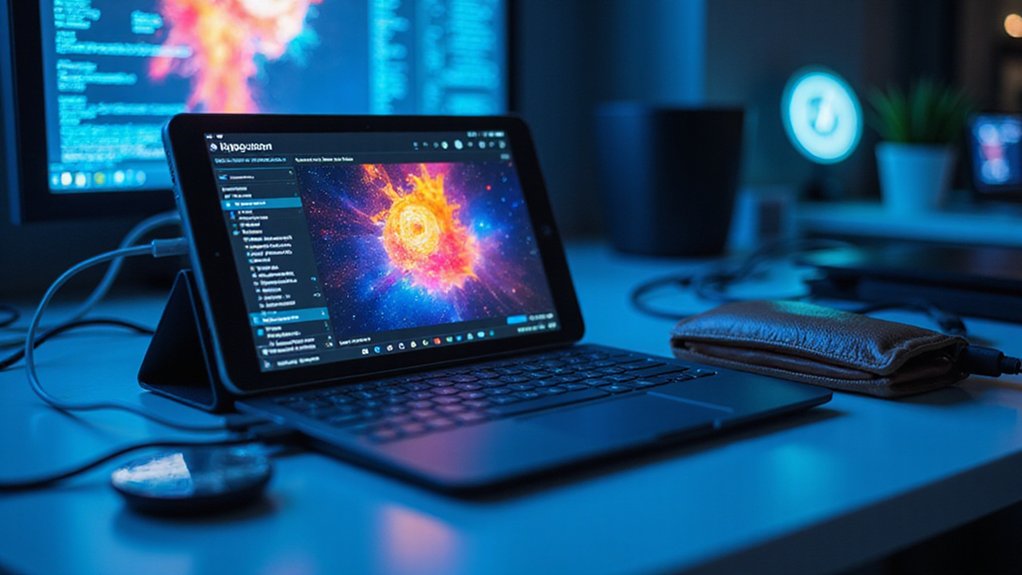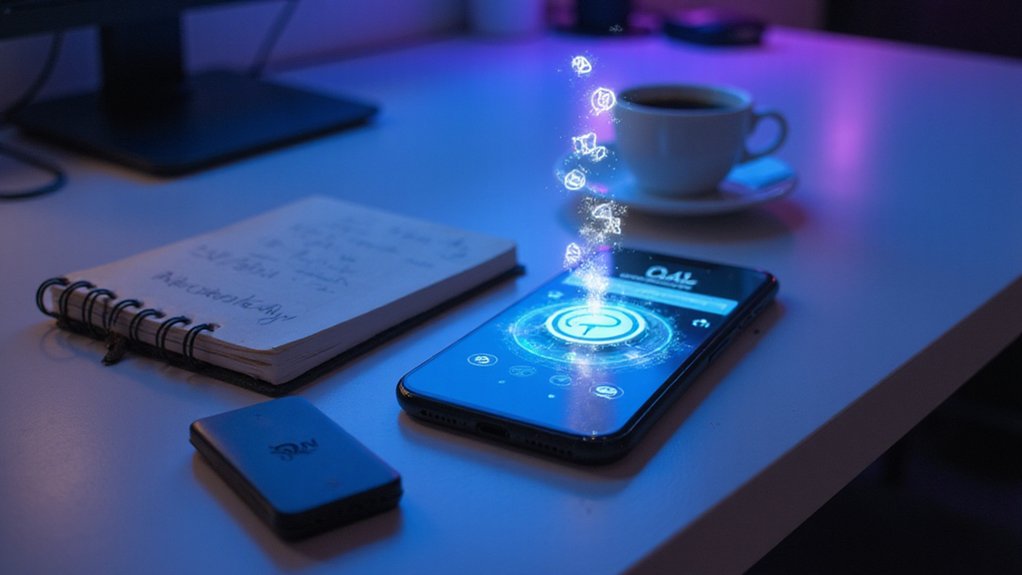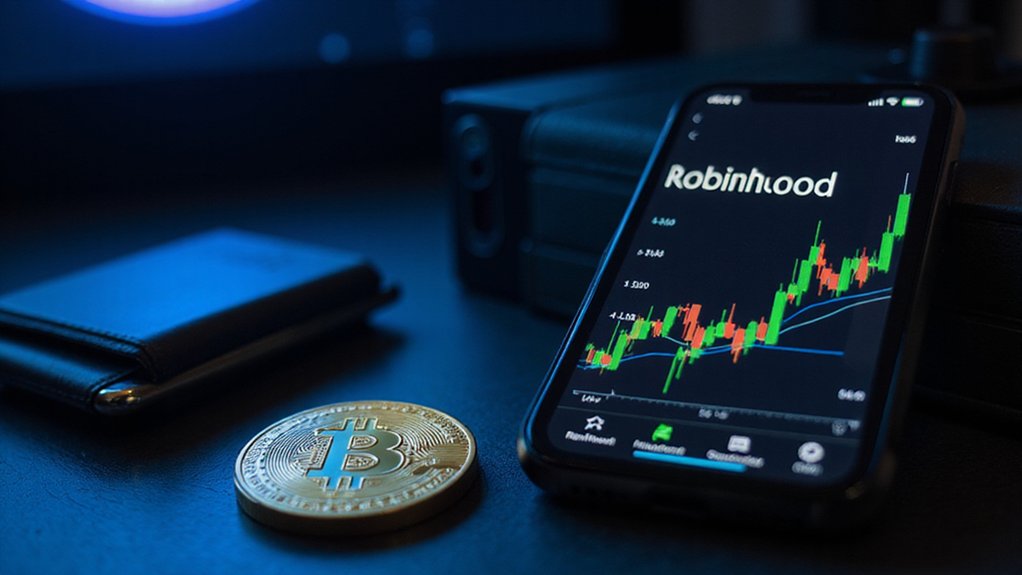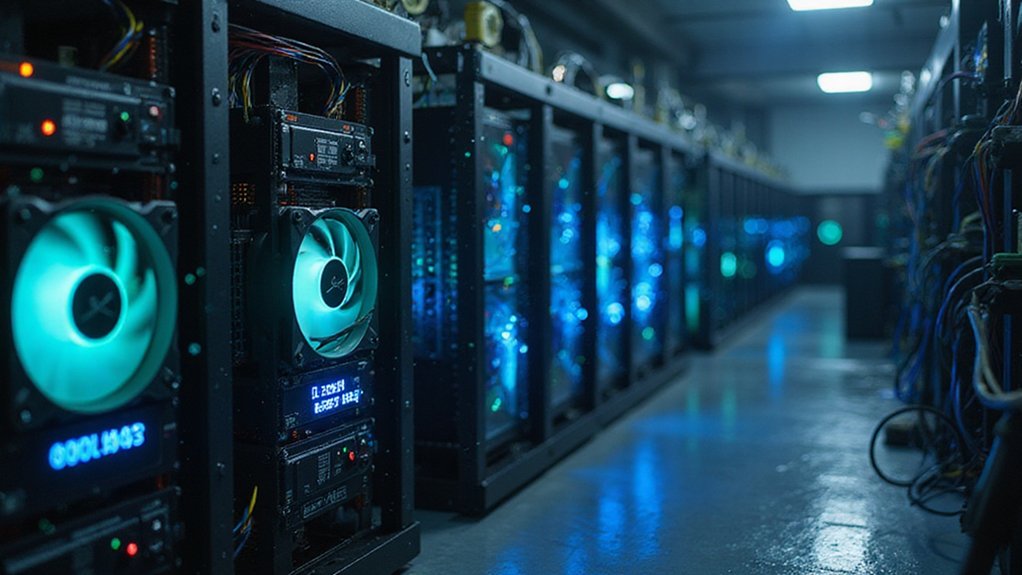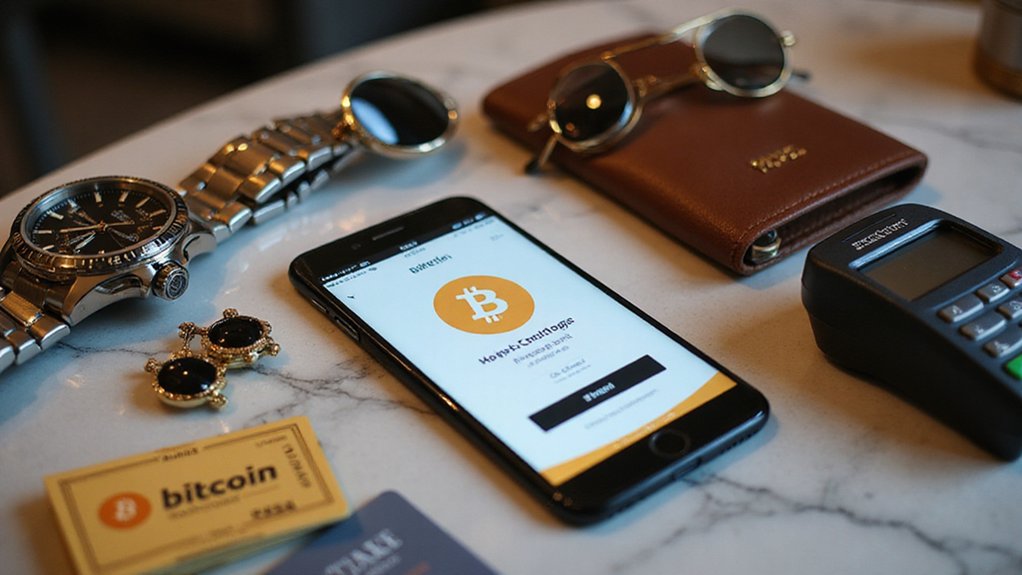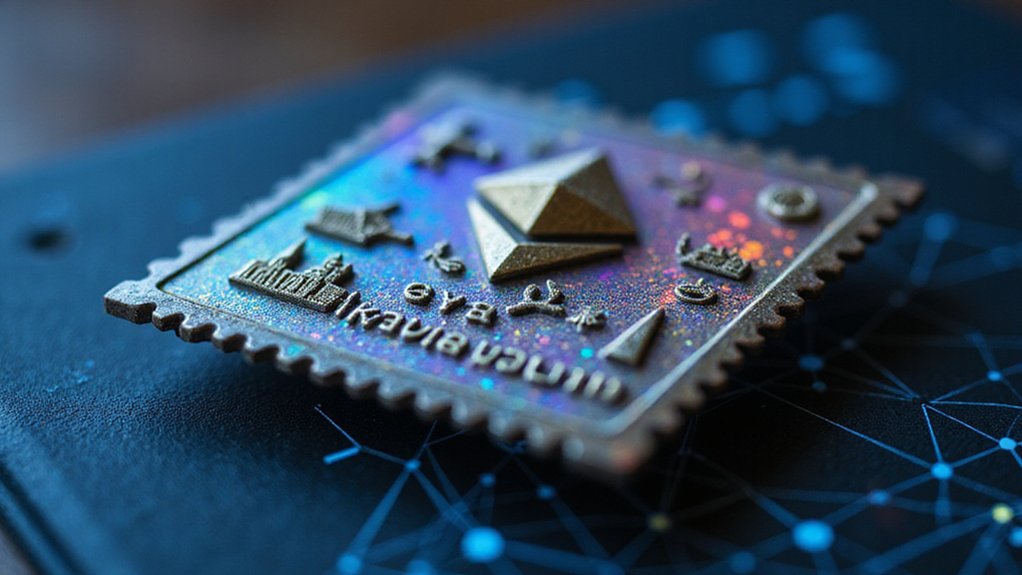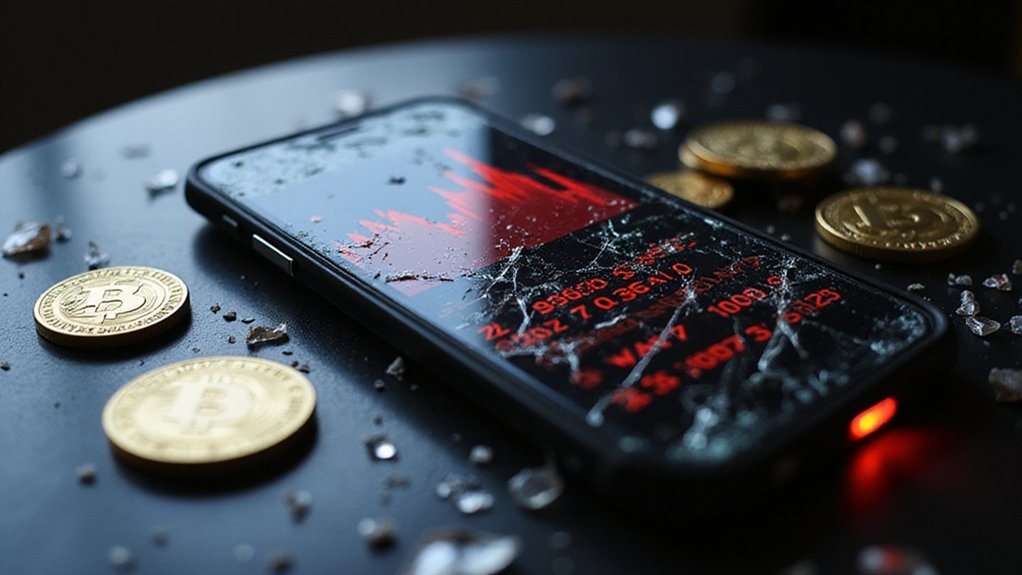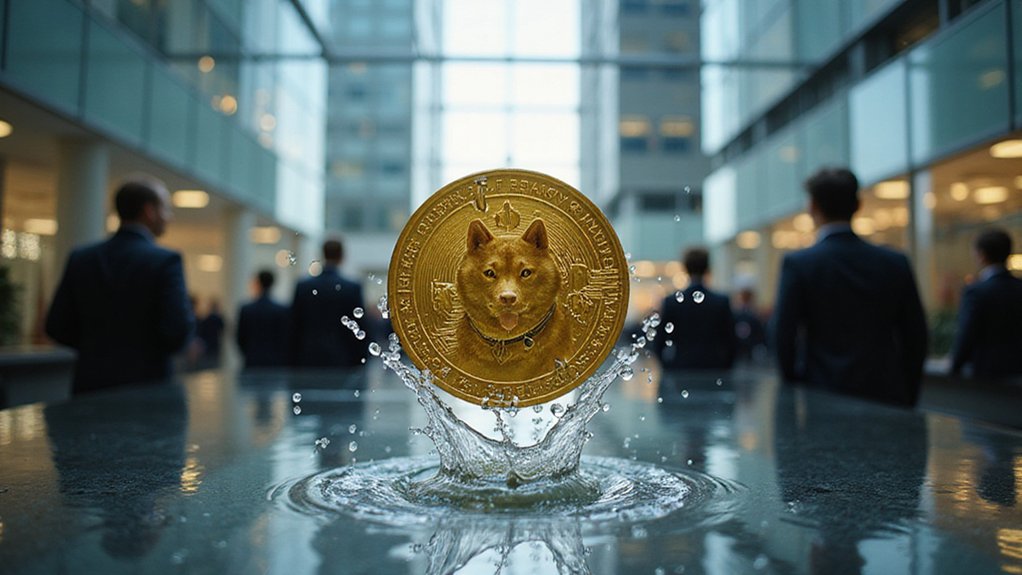Creating an NFT requires five essential steps: selecting a blockchain (Ethereum remains dominant despite gas fees; alternatives like Solana offer cost efficiency), setting up a secure wallet (MetaMask or Coinbase Wallet, with religious protection of seed phrases), preparing digital assets with proper resolution and metadata, minting through direct or lazy methods on platforms like OpenSea, and marketing through community building. Success hinges not merely on technical execution but on the strategic fusion of digital scarcity with authentic creative value—a paradox the blockchain uniquely enables.
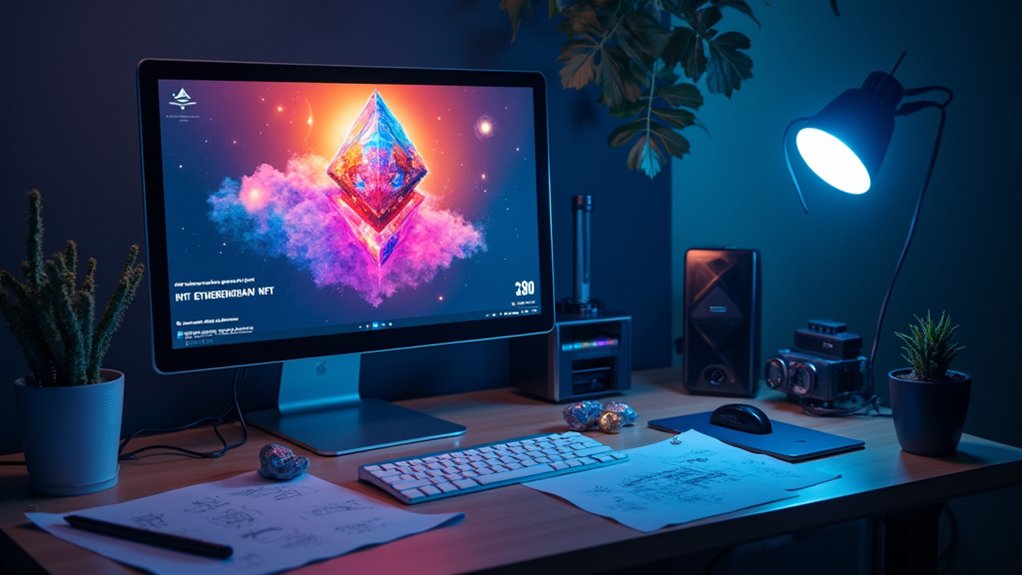
Why have mundane ownership of digital assets when blockchain technology allows for verified, immutable records of provenance?
The conventional claims of digital ownership pale against blockchain’s revolutionary promise of authenticated, unchangeable provenance records.
The burgeoning NFT ecosystem—where digital scarcity meets creative abundance—offers artists and entrepreneurs alike the opportunity to monetize digital works through tokenization.
This transmutation from mere file to coveted digital asset requires traversing a labyrinth of technical considerations, beginning with blockchain selection.
Ethereum maintains marketplace dominance via its ERC-721 and ERC-1155 standards, though the prohibitive gas fees have driven cost-conscious creators toward alternatives like Polygon and Solana (the latter offering transactions for pennies rather than hundreds of dollars during network congestion).
Prior to committing actual funds, prudent creators utilize testnets such as Goerli to rehearse the minting process.
Securing a compatible wallet represents the creator’s first tangible step.
MetaMask and Coinbase Wallet offer widespread marketplace integration, though one must safeguard seed phrases with near-paranoid vigilance—loss renders assets irretrievable, a stark departure from traditional banking’s safety nets.¹
For maximum versatility, creators should select wallets like MetaMask that support multiple networks for seamless interaction with various blockchain ecosystems.
Asset preparation demands attention to both technical specifications and marketplace differentiation.
Visual NFTs require minimum resolutions (typically 1000×1000 pixels), while metadata enrichment through traits and properties enhances discoverability.
The thoughtful inclusion of revealed content—accessible exclusively to owners—frequently justifies premium pricing.
Artists should ensure they own intellectual property rights to any digital files they plan to mint as NFTs.
The actual minting process presents a bifurcation: direct on-chain registration (incurring immediate gas fees) versus lazy minting (deferring costs until the first sale).
Platforms like OpenSea and Rarible facilitate both approaches, with collection creation typically preceding individual asset minting.
Post-minting, creators must determine pricing strategies (fixed versus auction formats) and royalty percentages for secondary sales—generally between 5-10%.
Most platforms require no coding knowledge to complete the minting process, making NFT creation accessible to artists without technical backgrounds.
Transaction finalization warrants verification through blockchain explorers, while tax implications vary jurisdictionally.
Post-mint success hinges less on technical execution than strategic community building through Discord and social media integration—the technical achievement of minting representing merely the opening salvo in a broader marketing campaign.
¹Indeed, the space’s trustless architecture proves simultaneously its greatest strength and most formidable barrier to mass adoption.
Frequently Asked Questions
Are NFTS Environmentally Harmful?
NFTs pose significant environmental concerns due to their energy-intensive creation and maintenance processes.
The blockchain technology underpinning NFTs—particularly those utilizing Proof-of-Work mechanisms—consumes substantial electricity, often sourced from fossil fuels, resulting in considerable carbon emissions.
Additionally, the hardware acceleration required for mining operations generates alarming quantities of e-waste containing toxic materials.
While sustainability efforts (carbon offsets, shifting to Proof-of-Stake systems) are emerging, NFTs’ environmental footprint remains a legitimate critique of this digital asset class.
Can I Sell My NFT on Multiple Marketplaces Simultaneously?
Yes, NFTs can indeed be listed on multiple marketplaces simultaneously.
Smart contract compatibility permitting, collectors can leverage cross-marketplace listing tools like NFTGo to broadcast their digital assets across platforms (OpenSea, Blur, Rarible) in a single transaction.
This multi-platform strategy—while requiring vigilant gas fee management and expiration date monitoring—dramatically increases visibility and sales probability by exposing the asset to diverse buyer pools.
The practice effectively creates a secondary market arbitrage opportunity that savvy sellers routinely exploit.
What Happens if the Marketplace I Used Shuts Down?
When a marketplace shutters, NFT owners aren’t left entirely adrift—their digital assets persist on the blockchain regardless of the platform’s operational status.
Smart contracts remain intact (mercifully), though the interface to access them vanishes.
Prudent collectors should promptly transfer their assets during any announced grace period, ensuring wallet access remains independent of the doomed marketplace.
Alternative venues like OpenSea, Blur, or Magic Eden offer refuge for continued trading, though market conditions may prove less than hospitable.
Do I Need to Pay Taxes on NFT Sales?
Yes, NFT sales typically trigger tax obligations.
The IRS classifies NFTs as property, subjecting transactions to capital gains tax (short-term rates reaching 37%, long-term 0-20%, collectibles potentially 28%).
Each sale creates a taxable event requiring meticulous cost basis documentation.
Sales tax complications further muddy the waters, with state-specific regulations creating a jurisdictional patchwork.
Given the regulatory flux surrounding digital assets, consulting a tax professional—preferably one who doesn’t grimace at the mention of blockchain—is advisable.
Can Someone Steal My NFT Artwork After I Mint It?
While minting establishes blockchain ownership, it doesn’t render artwork theft-proof.
Sophisticated actors can still appropriate visual content through unauthorized reproductions or counterfeit minting on alternative chains.
Prudent creators employ cold wallet storage, enable two-factor authentication, verify transaction signatures, and implement watermarking.
Post-theft, swift action—transferring remaining assets, filing DMCA takedowns, and alerting the community—becomes essential damage control.
The blockchain’s immutability, ironically both NFTs’ selling point and their vulnerability, means vigilance remains paramount.
